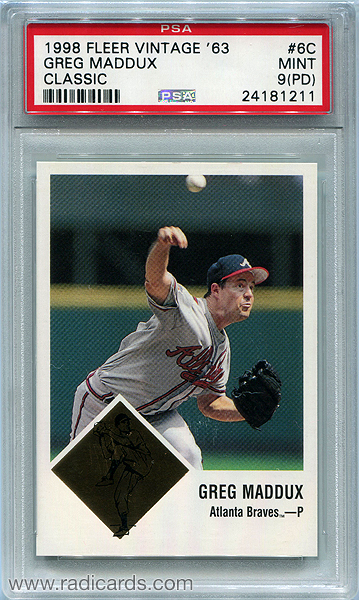
This is an interesting conversation. Depending on how badly one wants something and how much money one has, a single purchase has the potential to shake up market stability. The right combination of these two factors has the ability to do a lot of harm to any market. Let’s look at an example.
If one collector doesn’t care how much they spend on a card and pays say 500% more for a card than it’s actually worth (i.e., the card’s actual value is $100 but the buyer pays $500 for it), this creates a record of that one sale. So the next guy that comes along looking to sell their example of the same card sees the recorded sale and thinks they can replicate that price so they price their example at $500.
Inexperienced prospective buyers may now think the same card is worth $500 so they may be inclined to buy the card at that price. Mind you, the card is still valued at $100 to the significant majority of the market. However, those collectors who still need the card now have to deal with the artificially inflated demand created by the former buyer with liberal purchasing power intentional or not.
This set of circumstances has the ability to temporarily create what is called a volatile marketplace.1 What this means is that auction prices will be less predictable and usually for the worse. Like any market, the card market has guys trying to make a buck off of other collectors. The sooner you accept this, the sooner you’ll be in a better spot to both identify and manage your interactions with these types of guys. They aren’t bad people, but they do try hard to gouge the market when they see fit.
Depending on how much these individuals are willing to negotiate with knowledgeable and honest collectors, these interactions can either help or hurt the potential for relationship building. This hobby, like any other community of people, is about building relationships. It always works in the favor of the community when buyers and sellers can work together on taking care of each other. This is, however, ideal thinking and as such is unrealistic to expect every time. Resentment never was happiness. Don’t believe me? Ask around.
So how do you avoid market volatility?
Sellers: If you’re a seller and you want to squeeze as much juice out of the orange as you can, go ahead and start the BIN high but for the sake of the market, include a Best Offer option with a modest and realistic threshold. Better yet, create an auction-style listing with a starting bid of $0.99 and let it ride. The market will decide the actual value, and that’s always preferential.
In my years as an online buyer, I’ve seen buyers deliberately hold cards hostage at ransoms way beyond anything realistic and with very little negotiation interest. It’s an incredibly frustrating set of circumstances for those of us who are applying honest efforts to build our collections. When sellers deliberately try to shark the market, it has the potential to create a volatile marketplace. The reason being is that when something of significant desirability has a ridiculously high price tag applied to it, certain buyers may feel the need to make the purchase even though that same card was originally purchased by the seller that same week for a fifth of the asking price. Again, a recorded sale can do more harm than good.
Bottom Line: Ransoming cards, or anything for that matter, makes you look bad, cripples professional relationships, and prevents prospective buyers from wanting to deal with you.
Buyers: If you’re a buyer, be selective and spend only when it makes sense, not just because you have the money to burn through. Even though you have $500 to spend on that card that’s actually only worth $100, waiting for the opportunity to buy the card at $100 will save you $400 and the market from having to deal with the existence of a record of an over-payment. Patience truly is a virtue.
References:
- Volatility. www.investopedia.com ↩︎

 Visit our store
Visit our store


